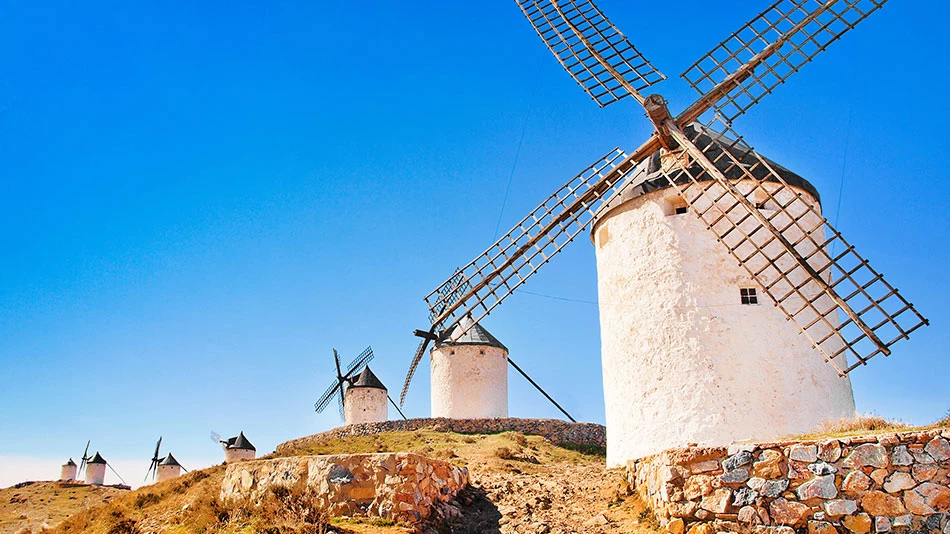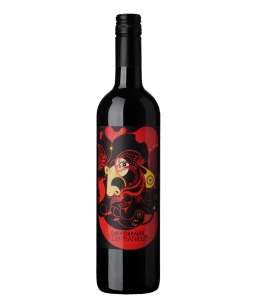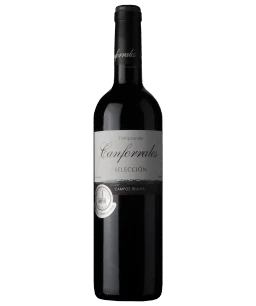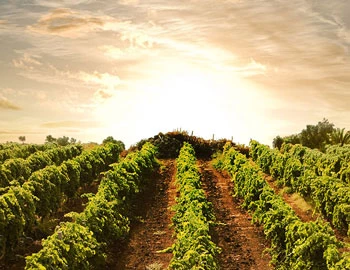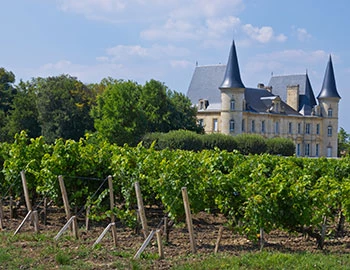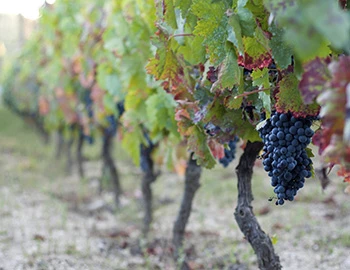La Mancha
La Mancha: beyond Don Quixote
If you travel through the barren country of La Mancha, you will keep encountering a man who is said to have lived here more than 500 years ago: Don Quixote, the “Knight of the Sorrowful Countenance.” Restaurants, streets and plazas are named after Miguel de Cervantes’ fictional character. But in the largest wine-growing region in Spain, the signs point towards a change. New expertise in cultivation and processing is producing fruity reds with Mediterranean charm, along with surprisingly crisp whites.
Red wines from La Mancha
The land may be sparse, but it is full of history: mighty castles bear witness to the 12th century struggle of knightly orders against the Moorish occupiers. And Miguel de Cervantes has the protagonist of his 17th century novel, Don Quixote, fighting not just against windmills, but also against wineskins, which in his imagination had transformed into monsters. So viticulture was already an integral part of rural life at the time. While La Mancha was long an inexhaustible reservoir of cheap everyday wines, a quality revolution has taken place over the last 20 years.
More fruit, more structure, more finesse
The spectacular quality improvements are the result of massive investment in large wineries, supported by EU grants. In La Mancha, around 180,000 hectares of vines are cultivated by around 18,000 workers, but the harvest is processed in just 260 wineries. Since operations began with steel tanks with automatic temperature control and new oak wood, red wines, especially, impress with their Mediterranean fruity richness and good structure. The red main variety is Tempranillo, known here as Cencibel, but international varieties such as Syrah, Cabernet Sauvignon or Merlot do well here, too.
A superpower named Airén
Still, 80 percent of vineyard area is planted with the almost-unknown white Airén variety, whose wines are mainly used for brandy production. Reduced yields and cool fermentation are increasingly producing Airén wines that match consumers’ tastes, with exotic fruit notes and crispness. The Verdejo and Sauvignon Blanc varieties are also on the upswing
Ideal Climate
The terroir is perfect for viticulture. Vines are rooted around 700 meters above sea level, in soils with high lime and sand proportions. The climate is continental, with very hot summers (up to 45 degrees Celsius) and very cold winters (down to -12 degrees Celsius). The large temperature fluctuations between day and night in late summer are particularly important for quality. The rainfall of 375 millimeters per year per square meter is scarce but sufficient. The prevailing conditions are good for organic farming.
